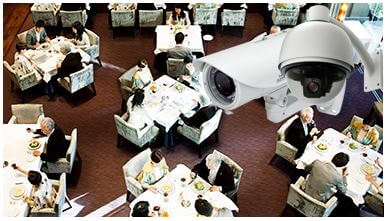Have you ever been in a completely quiet store – with no music playing in the background? What did you think? If you are like most people, you probably felt uncomfortable, and after browsing around for a bit, you quickly left, and headed toward a friendlier, more welcoming store.
On another note, have you ever left a restaurant because the music was far too loud or unpleasant? Did it make you feel anxious and stressed?
Music is a key, and underrated detail in a store’s retail business: The right music has the potential to put people in the right mood. It can attract customers, increase sales, and add revenue. Here are six reasons why playing the right music will benefit your restaurant:
1. Differentiate your brand
Are you a carefree, laid back brand? Do you run family-friendly restaurant with a warm atmosphere? Are you a edgy and energetic food truck? The tempo, loudness, style of the music you play can subliminally communicate your restaurant’s personality to customers, even before they enter your door.
Music is such an effective way to communicate your restaurant’s image and it’s often enough to hear notes streaming outside to realize your business personality. Imagine that you are in the mood for an authentic Mexican meal with your family. You hear loud rap music playing as you reach for the door. You might change your mind about the restaurant choice or at least question how likely they are to serve authentic cuisine. If you have been thinking about tweaking or re-branding your restaurant’s image, music can be a powerful way to help achieve your goals.
2. Build the right ambiance
Music plays a big role in creating and enhancing your business atmosphere. Research shows that the music you play affects not only the restaurant environment, but also patron moods and feelings.
3. Create a private space
By concealing the sounds of voices, background music helps create a personal space for customers, giving them privacy as they enjoy their meals and conversations with friends or family.
4. Make the food taste better?
While there has not been a study that has made this conclusion, some researchers have noted that people seemed to enjoy their meal more when they were able to listen to sounds they thought were more pleasant.
5. Shorten wait times
Music can affect people’s perception of time. A busy restaurant with long wait times will feel shorter if there is good music playing in the background. It’s the same principle behind the melodies played while callers are put on hold. When people are entertained, they are less likely to get bored – and likelier to return.
6. Increase productivity
In-store music is not only for the customers, employees and managers benefit from it too. An effective music strategy can be a great tool to boost staff morale, concentration and productivity. Studies suggest that people tend to work faster, and complete their tasks more accurately and when listening to music.
In-store music can be a big point of differentiation for your business, as well as a key element in your customers’ dining experience. If you need help picking the right tunes for your business, contact your local restaurant technology provider to see the many music options available.


